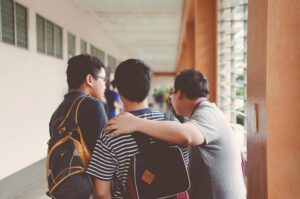This interview refers to the ZeeWaste4EU project which can be found in our Good Practices section.
GOOD PRACTICE OVERVIEW, CHALLENGES AND OPPORTUNITIES
What were the original goals and objectives of this practice/activity?
One of the goals of the ZeeWaste4EU project was to conduct a 7-day challenge among students to assess their food waste production. Each participant was required to make pictures of their meals before and after consumption, and then send these images to a special email address. Later on, all the images were evaluated using specialized software to quantify the quantity and types of food waste generated by each participant over the course of a week.
This activity aimed to gather unique data about food waste generation among young people in various European countries. Additionally, it aimed to raise awareness about food waste and, ideally, contribute to reducing its occurrence.
What was found to be particularly useful in achieving this practice objectives (methods, approaches)?
- Personalized approach: It proved highly effective to engage in one-on-one conversations with students, aiming to persuade them to take part in this challenge.
- Involvement of fellow students: Two Master’s students were designated to assist with this initiative, a decision that proved to be very effective. Their involvement facilitated reaching potential participants and they provided valuable insights and ideas on how to enhance student engagement.
- Offering rewards to participants upon completion of the 7-day challenge, such as a voucher for a lunch meal at the university cafeteria in our case.
- Simplifying the participation process for students as much as possible (clear instructions, timely notifications, and other measures).
What did students like the most about this practice?
In my opinion, the students liked the personalized approach and the opportunity to contribute to international research. Many of them participated in the final workshop, where we discussed the broader aspects of the food waste problem and presented the final results of the 7-day food waste challenge.
What were the key problems areas of this practice?
- The key problem was to persuade students to participate in this challenge, given its relatively lengthy duration (1 week) and the substantial effort required (capture of at least 6 pictures each day). Several students did not manage to complete the challenge, quitting their participation after 1 or 2 days. Strategies to address this concern are outlined in section 1.2.
- Picture quality and composition angle.
How can these elements be improved in the future?
- Perhaps, to make participation in this challenge mandatory for students by integrating it into a specific subject.
- Give clear instructions and regularly review the students’ pictures to facilitate timely adjustments as needed.
Is this practice replicable by other teachers in different countries? What factors should be considered while replicating this practice?
Yes, this practice has already been successfully implemented in various countries and holds potential for further adoption elsewhere. The methods of encouraging student participation in this challenge, while accounting for local circumstances, need to be thoroughly evaluated.
What was the most inspiring aspect for you while implementing this practice?
Working with students and seeing the final results.







